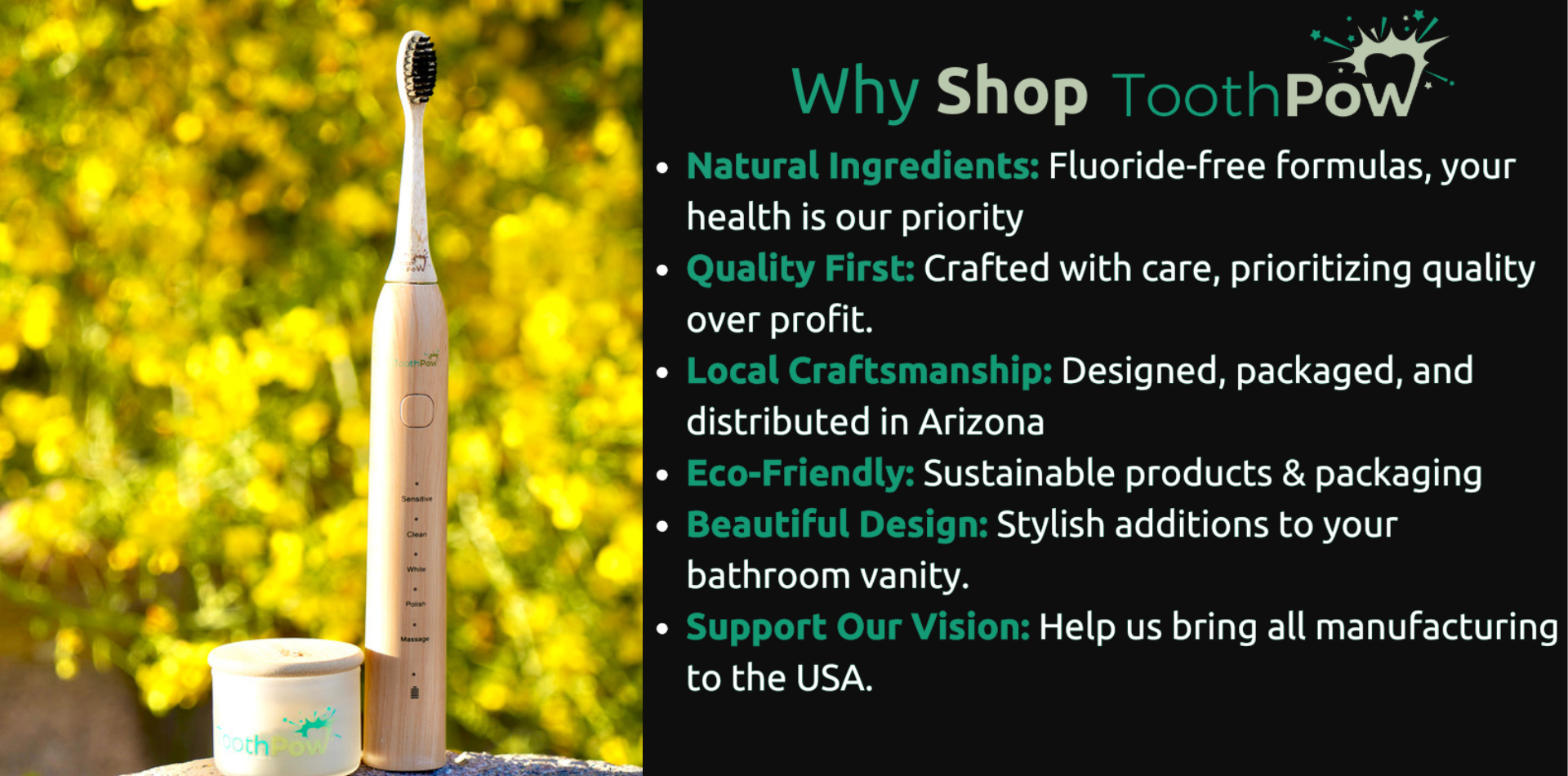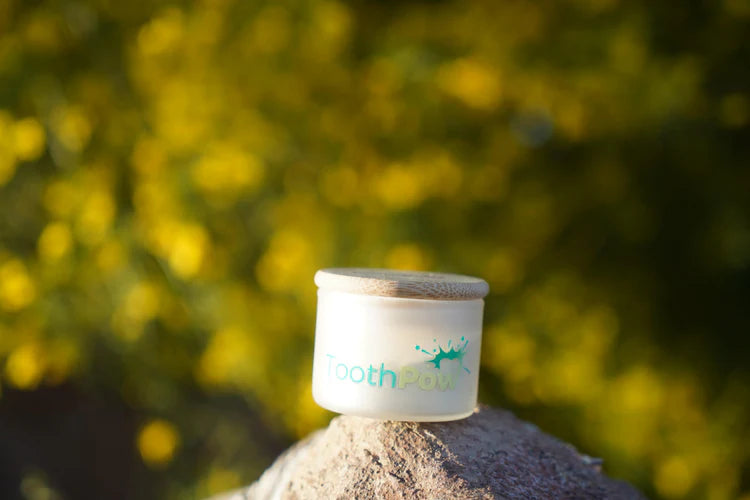Introduction
Nano-hydroxyapatite (n-HA) has gained significant attention in recent years for its ability to mimic the natural mineral composition of human tooth enamel, providing an effective means for remineralization. Initially developed by NASA to combat tooth enamel demineralization in astronauts, n-HA is now recognized for its potential to enhance dental health by replenishing essential minerals.
As concerns over the overuse of fluoride and its potential side effects grow, many are turning to n-HA as a natural alternative. Unlike fluoride, which works by creating a harder, more acid-resistant surface on the teeth, n-HA incorporates directly into the tooth enamel, mimicking the tooth's natural mineral. This not only restores enamel but also provides a solution that supports the enamel's original structure and function.
The efficacy of n-HA in dental care is well-documented, with numerous studies highlighting its ability to remineralize enamel, reduce sensitivity, and protect against wear and tear. This makes it a compelling option for those seeking to maintain optimal oral health through natural means.
What is Nano-Hydroxyapatite?
Nano-hydroxyapatite (n-HA) is a form of calcium phosphate, which is the primary mineral component of human bones and teeth. This nano-sized version of hydroxyapatite is particularly effective in dental applications due to its ability to integrate seamlessly with the natural enamel. The particles are small enough to penetrate and fill microscopic holes in the enamel, aiding in the growth of enamel crystals and effectively reducing tooth sensitivity.
The history of n-HA is rooted in space research. NASA developed this material to help astronauts maintain their dental health during long missions in space, where the lack of gravity could lead to rapid demineralization of teeth. Today, this innovative material is being utilized in various dental products to help individuals achieve healthier, stronger teeth.
In dental products, n-HA works by depositing minerals back into the teeth, using a replica of the natural tooth structure. This process helps in the restoration of early-stage cavities, reduction of sensitivity, and protection of enamel against daily wear and tear. Unlike some treatments that might merely coat the teeth, n-HA integrates and repairs from within, providing long-lasting benefits.

How Does Nano-Hydroxyapatite Work?
Nano-hydroxyapatite (n-HA) operates on a fundamental principle of biomimicry, replicating the natural processes that maintain and repair human tooth enamel. Its mechanism of action involves several key steps that contribute to its effectiveness in dental care:
Incorporation into Tooth Enamel
The primary function of n-HA in dental products is its ability to integrate into the enamel structure. Enamel, the hard outer layer of the teeth, is primarily composed of hydroxyapatite crystals. When enamel is damaged or demineralized due to acidic environments, n-HA can step in to restore these lost minerals. The nano-sized particles of hydroxyapatite are small enough to penetrate deep into the enamel, filling microscopic defects and initiating the process of enamel crystal growth.
Filling Microscopic Holes: Nano-hydroxyapatite particles are designed to be small enough to infiltrate the tiniest openings in the enamel. Once inside, they act as a scaffold, encouraging the deposition of calcium and phosphate ions. This process effectively fills in the micro-pores and cracks, restoring the enamel's integrity and strength.
Crystal Growth: The presence of n-HA provides a template for the growth of new enamel crystals. These crystals grow in a way that mimics the natural structure of enamel, ensuring that the repaired areas are just as strong and resilient as the original tissue.
Reduction of Tooth Sensitivity
Tooth sensitivity often results from the exposure of dentin tubules, tiny channels that lead directly to the nerve endings within the tooth. When enamel is worn away or damaged, these tubules become exposed, allowing stimuli such as heat, cold, or pressure to reach the nerves, causing pain. Nano-hydroxyapatite addresses this problem by sealing the exposed tubules.
Blocking Dentin Tubules: By infiltrating and sealing these tubules, n-HA creates a protective barrier that prevents external stimuli from reaching the nerves. This sealing effect significantly reduces tooth sensitivity, providing relief to individuals who experience discomfort from hot, cold, or sweet foods and beverages.
Protection Against Acidic Environments
One of the critical threats to tooth enamel is the presence of acids in the mouth, which can result from dietary habits or bacterial activity. These acids can demineralize enamel, making it more susceptible to decay and erosion. Nano-hydroxyapatite helps protect against these acidic challenges in several ways:
Acid Neutralization: While n-HA does not directly neutralize acids, its remineralization capabilities help counteract the effects of acid exposure. By continuously repairing and strengthening enamel, n-HA makes the teeth more resistant to acid attacks.
Creating a Protective Layer: As n-HA particles integrate into the enamel, they form a robust protective layer on the tooth surface. This layer acts as a shield against acidic environments, helping to preserve the structural integrity of the enamel over time.
Comparison with Fluoride
Fluoride has long been the go-to mineral for tooth remineralization. It works by incorporating into the enamel to form fluorapatite, a compound that is more resistant to acids than hydroxyapatite. However, fluoride's action is largely surface-based and relies on creating a harder exterior to protect the underlying enamel.
n-HA vs. Fluoride: Unlike fluoride, n-HA mimics the natural composition of enamel, integrating directly into the tooth structure. This biomimetic approach not only restores the enamel but also enhances its natural properties, providing a comprehensive solution that supports the enamel's original function and appearance.
Key Benefits of Nano-Hydroxyapatite
Nano-hydroxyapatite (n-HA) offers a range of significant benefits for dental health, making it a valuable ingredient in modern oral care products. Here are some of the key advantages:
Restoration of Early-Stage Cavities
One of the most remarkable benefits of nano-hydroxyapatite is its ability to restore early-stage cavities. When tooth enamel begins to demineralize, small lesions or "incipient caries" can form. If left untreated, these can develop into full-blown cavities requiring more invasive treatments like fillings. However, n-HA can intervene early in this process.
Enamel Remineralization: Nano-hydroxyapatite particles penetrate the enamel and deposit calcium and phosphate ions, which are essential for the remineralization process. This helps in repairing the initial damage before it progresses into a more severe cavity.
Clinical Evidence: Studies have shown that n-HA is effective in remineralizing early carious lesions. Research comparing n-HA to fluoride treatments found that both were similarly effective in enhancing enamel microhardness and promoting remineralization of early caries (UL Solutions) (EMSL Analytical).
Reduction of Sensitivity
Tooth sensitivity is a common problem caused by the exposure of dentin tubules, which lead to the tooth's nerve endings. Nano-hydroxyapatite can significantly alleviate this sensitivity by sealing these tubules.
Tubule Sealing: n-HA particles are small enough to penetrate and block the exposed dentin tubules, creating a barrier that prevents stimuli such as hot, cold, or sweet substances from triggering pain.
Long-Term Relief: Unlike some treatments that provide temporary relief, n-HA offers a more lasting solution by integrating into the tooth structure and continuously protecting the sensitive areas (Intertek) (EMSL Analytical).
Protection Against Wear and Tear
Daily activities, including eating, drinking, and even brushing, can cause wear and tear on the enamel. Nano-hydroxyapatite helps protect the teeth from this daily damage.
Strengthening Enamel: By continuously depositing minerals into the enamel, n-HA reinforces the tooth's outer layer, making it more resistant to wear and tear.
Durable Protection: The protective layer formed by n-HA is not only strong but also closely mimics the natural enamel, providing a durable defense against physical and chemical challenges (UL Solutions) (HQTS).
Comparison with Fluoride
While fluoride has been the standard for tooth remineralization for decades, n-HA offers a different approach that complements or even surpasses fluoride in certain aspects.
Biomimetic Action: Unlike fluoride, which forms a harder surface layer, n-HA integrates into the enamel, restoring its natural composition and structure. This biomimetic action supports the enamel's inherent properties, enhancing both its strength and appearance.
Fewer Side Effects: Some concerns associated with fluoride, such as dental fluorosis (overexposure leading to tooth discoloration), are not an issue with n-HA. This makes n-HA a safer option for people of all ages, including children (EMSL Analytical) (HQTS).
Addressing Common Misconceptions
As with any innovative product in the health and wellness sector, nano-hydroxyapatite (n-HA) has faced its share of misconceptions and myths. Addressing these misunderstandings is crucial for consumers to make informed decisions about their oral care. Here are some common misconceptions and the facts that dispel them:

Misconception 1: Nano-Hydroxyapatite is Unsafe Because it is a Nano-Particle
Fact: The term "nano" in nano-hydroxyapatite simply refers to the size of the particles, which are engineered to be extremely small to effectively penetrate and repair enamel. The safety of n-HA has been extensively studied, and it has been found to be biocompatible and safe for use in dental products. Studies show that n-HA is not only effective but also poses no health risks when used as intended in oral care products.
Scientific Backing: Numerous studies have confirmed the safety and efficacy of n-HA. For example, a study published in the journal "Materials" highlighted that n-HA is safe for use in dental products and does not pose any significant health risks when used appropriately.
Regulatory Approval: The European Union has approved the use of n-HA under specific conditions, such as ensuring the particles are rod-shaped with an aspect ratio less than 3 and a concentration less than 10%. This regulatory approval underscores the safety of n-HA when used according to guidelines.
Misconception 2: Europe Banned Nano-Hydroxyapatite
Fact: Contrary to the belief that n-HA is banned in Europe, it is actually approved for use under certain conditions. The EU's approval specifies the shape, size, and concentration of n-HA particles, ensuring they are safe and effective for consumer use.
EU Conditions: The approval conditions include using rod-shaped particles with an aspect ratio less than 3, keeping the concentration below 10%, and ensuring that the particles are not modified or surface-coated.
Why it Matters: These conditions help to ensure that the n-HA used in products is safe and effective, mitigating any potential risks associated with its use.
Misconception 3: Nano-Hydroxyapatite is Just a Trend with No Real Benefits
Fact: Nano-hydroxyapatite is not just a fleeting trend; it is backed by robust scientific evidence and clinical studies that highlight its effectiveness in dental care. Its benefits go beyond surface-level improvements, providing deep remineralization and long-lasting protection.
Clinical Evidence: Research has demonstrated that n-HA is highly effective in remineralizing enamel and reducing tooth sensitivity. Studies comparing n-HA with fluoride have shown similar or superior results in terms of remineralization and overall dental health.
Long-Term Benefits: Unlike some treatments that offer temporary relief, n-HA provides sustained benefits by integrating into the enamel and continuously supporting its natural structure and function.
Misconception 4: High Concentrations of Nano-Hydroxyapatite are Necessary for Effectiveness
Fact: While higher concentrations of n-HA can be effective, studies have shown that even lower concentrations (around 5%) can provide significant benefits. In fact, excessively high concentrations (above 10%) can lead to particle clumping, reducing the net effective concentration.
Optimal Concentrations: Research indicates that 5% n-HA can be more effective than 10% because it avoids the issue of particle aggregation, which can hinder its effectiveness【57†source】.
-
Efficacy at Lower Concentrations: Studies have found no significant differences in the caries remineralizing efficacy between 5% and 10% n-HA formulations, suggesting that lower concentrations are sufficient for achieving desired dental health outcomes.
Practical Applications in Oral Care Products
Nano-hydroxyapatite (n-HA) has found its place in a variety of oral care products, leveraging its unique properties to promote dental health. Here’s a closer look at the practical applications of n-HA in the market today:
Toothpaste
Remineralizing Toothpaste: Nano-hydroxyapatite is commonly incorporated into toothpaste formulations aimed at remineralizing and strengthening tooth enamel. These toothpaste products are particularly beneficial for individuals with early signs of tooth decay, sensitivity, or enamel erosion.
Benefits: Remineralizing toothpaste with n-HA helps repair enamel, reduce sensitivity, and protect against cavities. The n-HA particles fill microscopic holes and cracks in the enamel, effectively restoring its natural structure.
Examples: Many leading brands now offer toothpaste with n-HA. These products are marketed for their ability to provide superior protection and repair compared to traditional fluoride toothpaste.
Mouthwash
Remineralizing Mouthwash: Mouthwashes containing nano-hydroxyapatite offer an additional layer of protection and remineralization. These products are designed to complement the effects of n-HA toothpaste by providing a rinse that reaches areas of the mouth that brushing alone might miss.
Benefits: Using a mouthwash with n-HA can help enhance the remineralization process, reduce sensitivity, and maintain overall oral health. It ensures that n-HA particles reach all surfaces of the teeth and gums, providing comprehensive protection.
Examples: Remineralizing mouthwashes with n-HA are becoming increasingly popular as part of a complete oral care routine. They are often recommended by dental professionals for enhanced enamel protection.
Dental Varnish
Professional Dental Treatments: Dentists use nano-hydroxyapatite in professional treatments such as dental varnishes. These treatments involve applying a concentrated form of n-HA directly to the teeth, offering a powerful boost to enamel remineralization and protection.
Benefits: Dental varnishes with n-HA provide an intensive treatment option for patients with significant enamel erosion or sensitivity. The high concentration of n-HA in these treatments delivers immediate and long-lasting benefits.
Examples: Dental clinics often use n-HA varnishes as part of their preventive care services. These treatments are especially useful for patients at high risk of cavities or those undergoing orthodontic treatment.
Chewing Gum
Remineralizing Chewing Gum: Chewing gum containing nano-hydroxyapatite offers a convenient way to support enamel health throughout the day. This application leverages the natural chewing action to distribute n-HA particles across the teeth.
Benefits: Chewing gum with n-HA can help maintain enamel strength, reduce sensitivity, and promote overall oral hygiene. It is a simple and effective addition to traditional brushing and flossing routines.
Examples: Various brands now produce chewing gum with added n-HA, marketed for its ability to support dental health between brushings
Combining Nano-Hydroxyapatite and Bone-Derived Hydroxyapatite
The benefits of both nano-hydroxyapatite and bone-derived hydroxyapatite can be harnessed in a combined toothpaste formula. This approach leverages the unique strengths of each type to provide comprehensive dental care.
Potential Benefits of a Combined Formula
Enhanced Remineralization: Nano-hydroxyapatite can penetrate deep into the enamel, filling microscopic defects and providing a template for crystal growth. Bone-derived hydroxyapatite, with its larger particles, can reinforce the surface enamel, offering an additional layer of protection.
Improved Sensitivity Reduction: The deep penetration of n-HA combined with the surface sealing properties of bone-derived hydroxyapatite can more effectively reduce tooth sensitivity.
-
Balanced Oral Health: Using both forms of hydroxyapatite ensures that all layers of the enamel are addressed, promoting overall dental health and providing a robust defense against daily wear and tear.
ToothPow: The Superior Choice for Comprehensive Oral Care

When it comes to choosing a toothpaste that leverages the best of both worlds—nano-hydroxyapatite and bone-derived hydroxyapatite—ToothPow stands out as the superior option. Our meticulously formulated product combines these two powerful ingredients to provide comprehensive dental health benefits.
Why ToothPow?
Enhanced Remineralization: ToothPow’s unique formula ensures that both surface-level and deep enamel repair are addressed. The combination of nano-hydroxyapatite, which penetrates deep into the enamel, and bone-derived hydroxyapatite, which reinforces the surface, offers unparalleled remineralization.
Reduction of Sensitivity: By sealing dentin tubules and reinforcing enamel, ToothPow significantly reduces tooth sensitivity, providing both immediate and long-term relief.
Balanced Oral Health: Our formula ensures that every layer of enamel is protected, promoting overall dental health and providing robust defense against daily wear and acidic challenges.
Natural Ingredients: In addition to hydroxyapatite, ToothPow includes other all-natural ingredients such as White Kaolin Clay, Calcium Bicarbonate, Sodium Bicarbonate, Birch Xylitol, Monk Fruit, and Spearmint Oil. This ensures a safe, effective, and refreshing experience.
Explore ToothPow’s Benefits Further
To learn more about how ToothPow can transform your oral care routine, explore our detailed articles and product information:
By choosing ToothPow, you are opting for a scientifically backed, effective, and natural solution to maintain and enhance your dental health. Experience the difference with ToothPow today.
Conclusion
Nano-hydroxyapatite is a scientifically validated, safe, and effective ingredient for oral care products. Its integration into various applications such as toothpaste, mouthwash, dental varnishes, and chewing gum offers multiple benefits, from remineralization and sensitivity reduction to overall enamel protection. Combining n-HA with bone-derived hydroxyapatite in a single formula can enhance these benefits, providing a superior solution for maintaining optimal dental health.
References
ResearchGate: Hydroxyapatite for cavity prevention
Instant Magazine: Remineralization of Early Cavities

